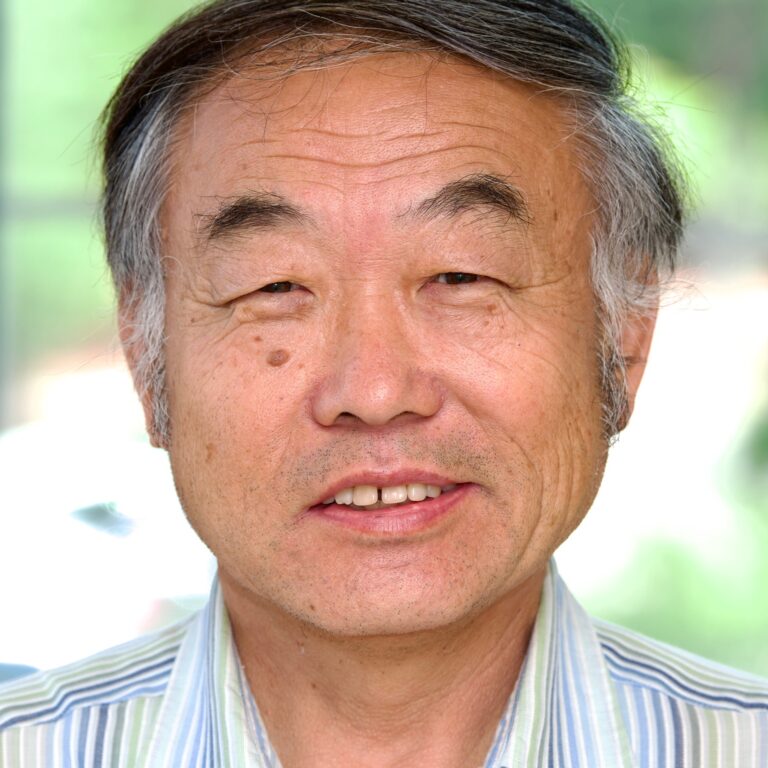Chueng Ji

Bio
Professor Ji received his PhD in 1982 from Korea Advanced Institute of Science and Technology (KAIST) after getting MS in KAIST, 1978, and BS in Seoul National University, 1976, respectively. He joined the theory group of the Stanford Linear Accelerator Center (SLAC) in 1982. In 1984, he became a postdoctoral fellow at Department of Physics, Stanford University and was appointed as a research associate at Brooklyn College of the City University of New York in 1986. He joined the faculty of North Carolina State University in 1987. At NCSU, he was an assistant professor for 1987-1992, an associate professor for 1992-1997 and has been a professor since 1997.
Offices Held
- 2010-present: Chair, International Light Cone Advisory Committee
- 2009-2011: 28th President, Association of Korean Physicists in America
- 2009-2010: 38th President, Korean-American Scientists and Engineers Association
Career
- 1997-present :Professor, Department of Physics, North Carolina State University
- 2013-2015 :Director of Graduate Program, Department of Physics, North Carolina State University
- 1992-1997 :Associate Professor, Department of Physics, North Carolina State University
- 1993, Fall; 2005, Spring :Visiting Professor, School of Physics, Seoul National University
- 1987-1992 :Assistant Professor, Department of Physics, North Carolina State University
- 1986-1987 :Research Associate, Department of Physics, Brooklyn College of the City University of New York
- 1984-1986 :Postdoctoral Research Affiliate, Department of Physics, Stanford University
- 1982-1984 :Visiting Scholar, Stanford Linear Accelerator Center
Area(s) of Expertise
Professor Ji developed a relativistic quark model motivated by the quantum chromodynamics (QCD) to describe the hadron structure and spectrum. He Pioneered the idea of connecting the instant form dynamics and the light-front dynamics and contributed to utilizing the light cone in solving relativistic bound state and scattering problems. He has also made chiral effective theory calculations to study the long distance scale QCD phenomenology as well as perturbative QCD computations of the nucleon, meson and deuteron form factors to understand the structures of hadron and a few hadron systems at short distance scale.
Other research accomplishments include an application of nuclear and particle physics to astrophysics and cosmology involving neutron star and dark matter.
Publications
- Consistency of the pion form factor and unpolarized transverse momentum dependent parton distributions beyond leading twist in the light-front quark model , PHYSICAL REVIEW D (2024)
- Nonlocal chiral contributions to generalized parton distributions of the proton at nonzero skewness , PHYSICAL REVIEW D (2024)
- Strong interaction physics at the luminosity frontier with 22 GeV electrons at Jefferson Lab , EUROPEAN PHYSICAL JOURNAL A (2024)
- The present and future of QCD , NUCLEAR PHYSICS A (2024)
- Independence of current components, polarization vectors, and reference frames in the light-front quark model analysis of meson decay constants , PHYSICAL REVIEW D (2023)
- Interpolation Between Instant Form Dynamics and Light-Front Dynamics , RELATIVISTIC QUANTUM INVARIANCE (2023)
- Interpolation of Quantum Chromodynamics in 1+1 Dimension , RELATIVISTIC QUANTUM INVARIANCE (2023)
- Interpolation of Quantum Electrodynamics , RELATIVISTIC QUANTUM INVARIANCE (2023)
- Octet and decuplet baryon sigma terms and mass decompositions , PHYSICAL REVIEW D (2023)
- Relativistic Quantum Invariance , Lecture Notes in Physics (2023)
Groups
Honors and Awards
- Fellow of American Physical Society, 2011.
- Outstanding Referee of American Physical Society, 2008.
- Plaque of Appreciation from the North Carolina Chapter of Korean-American Scientists and Engineers Association in Commemoration of the Tenth Anniversary of Technical Symposium, 1999.
- Dirac Scholarship Award, The Third Conference on the Intersections between Particle and Nuclear Physics, 1988.
- Korea Science and Engineering Foundation fellowship, 1982.